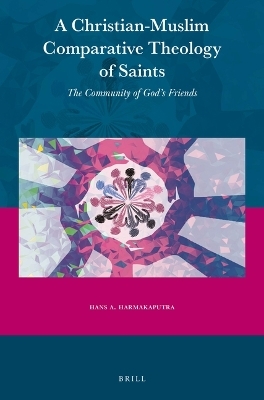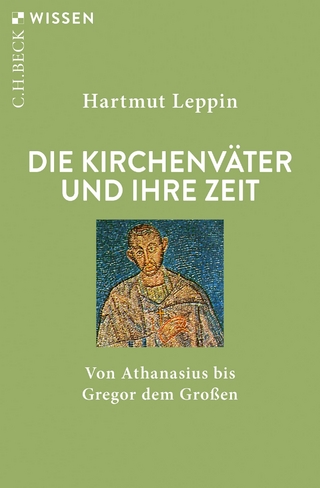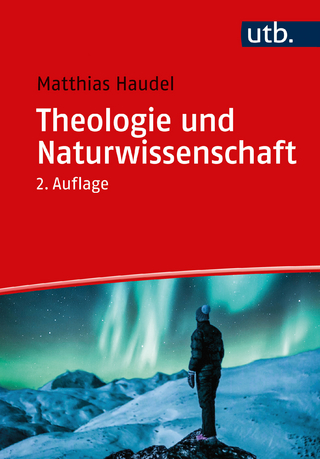
A Christian-Muslim Comparative Theology of Saints
Brill (Verlag)
978-90-04-51052-4 (ISBN)
In A Christian-Muslim Comparative Theology of Saints: The Community of God’s Friends, Hans A. Harmakaputra focuses on a question that emerges from today’s multi-faith context: “Is it possible for Christians to recognize non-Christians as saints?” To answer affirmatively, he offers a Christian perspective on an inclusive theology of saints through the lens of comparative theology that is based on the thought of Catholic, Protestant, and Muslim theologians: Karl Rahner, Jean-Luc Marion, Elizabeth Johnson, Dietrich Bonhoeffer, Paul Tillich, and Ibn Arabī’. As a result of this interreligious comparison, three theological constructs emerge: (1) saints as manifestations and revealers of God’s self-communication, (2) the hiddenness of saints, and (3) saints as companions.
These theological constructs redefine and reconfigure Christian understanding of saints on one hand, and on the other hand provide theological reasoning to include non-Christians in the Christian notion of the communion of saints.
Hans A. Harmakaputra, Ph.D. (2020), Boston College, is Visiting Assistant Professor in Comparative Theology and Muslim-Christian Relations at Hartford International University for Religion and Peace, Connecticut, USA. He has published articles and book chapters, including a chapter in the book Georgetown Companion to Interreligious Studies (Georgetown University Press, 2022). Starting in Fall 2022, he will join Augustana University, Sioux Falls, South Dakota, as Assistant Professor of Religion.
Acknowledgements
Introduction
1Why Saints?
2Reconfiguring Saints and Sainthood: The Quest for an Inclusive Christian Theology of the Saints
3Disciplinary Framework: Comparative Systematic Theology
4Limits of the Study
5Structure
1 Contemporary Catholic Discourse on Theology of Saints
1Canonization, Intercessory Roles, and Moral Exemplars:Three Features of the Saints in Catholic Teaching
2Saints as Tangible Manifestations of God’s Grace in History:Karl Rahner’s Theology of Saints
3Remembering the Saints as Friends of God and Prophets:Elizabeth Johnson’s Feminist Perspective on the Saints
4The Invisibility of the Saint According to Jean-Luc Marion
2 Contemporary Protestant Discourse on Theology of Saints
1Protestant Reformers’ Criticism of the Veneration of Saints
2Contemporary Protestant Churches’ Approach to Saints
3Contemporary Theological Approaches to a Theology of Saints
3.1A Worldly Saint: Dietrich Bonhoeffer and His Thoughts on Sainthood
3.2Saints as Embodiments of Ultimate Reality: Paul Tillich and His Notion of Saintliness and Sanctification
3 Friends of God and Sainthood in Islam: An Introduction
1Clarification of the Key Terms Related to Sainthood
2Signs of Awliya Allah: A Phenomenological Approach to Muslim Saints
2.1 Reductionist and Relativistic Approaches to Sainthood
2.2Approaching Sainthood as a Tradition in Islam
2.3Miraculous Deeds as the Signs of a Wali: The Case of Abdurrahman Wahid
3Friends of God in the Qur’an and Hadith: A Textual Approach
4Formulation of Sainthood in the Early Period of Sufism:A Theological Approach
4.1 Al-Junayd: Saints as Models for Believers
4.2 Hakim al-Tirmidhi: Sainthood and the Seal of the Saints
4 Friends of God and Sainthood According to IBN ‘Arabi
1Clarification of Ibn ?Arabi’s Key Concepts
1.1 Oneness of Being
1.2 The Human and the Perfect Human
1.3 The “God Created in Beliefs”
2The Realm of the Walaya
2.1 The Relationship of Sainthood to Prophethood and Messengerhood
2.2 The Universality of Walaya
3The Saints as the Heirs of the Prophets
4The “Hiddenness” of Saints
5 Saints as Manifestations and Revealers of God’s Self-Communication
1The Universality of God’s Self-Communication
1.1 Grace as the Self-Communication of God
1.2 Anonymous Christians
1.3 From Anonymous Christians to Saints
2The Particularity of God’s Self-Communication
2.1 The Role of Jesus Christ in God’s Universal Self-Communication
2.2 Hidden Saints as Many Mediations
3Towards the Recognition of Hidden Saints
3.1 Hidden Saints as the Mystics of Everyday Life
3.2 Universal Paths for Realizing God’s Grace
3.3 Saints as Revealers of New Modes of God’s Grace
6 The Hiddenness of Saints
1Banality and Holiness: Sanctity as Liminal Space
1.1 “He Who Eats Food and Walks in the Markets”: Saints in the World
1.2 Worldly Saints: Sanctification as the Journey in the Liminal Space
2“Only a Saint Can Recognize Another Saint”: A Phenomenology of Sainthood
2.1 “The One Who Blames Oneself”: The Malamiyya According to Ibn ?Arabi
2.2 Hiddenness as a Mark of Sainthood
3“He Who Sees You Sees Me”: The Transparency and Mediating Role of a Saint
3.1 Friends of God as Mediations between God and Human Beings
3.2 Saints as Icons of the Invisible God
7 Saints as Companions
1Reinvigorating the Communion of Saints: The Significance of the Companionship Paradigm
1.1 The Paradigm of Companionship and Its Significance
1.2 The Seal of the Muhammadan Saints and the Problem of Hierarchy
2Expanding the Boundaries of the Communion of Saints
2.1 Friends of God and Cloud of Witnesses as Primary Metaphors of the Companionship Paradigm
2.2 Reconfiguring the Concept of Intermediation of the Saints
3Following in the Footsteps of the Friends of God
3.1 The Intersections of Memory, Hope, and Praxis
3.2 Multiple Paths of Holiness
3.3 Encountering the Hidden Christ through Praxis
8 Approaching Saints: An Inclusive Christian Theology of Saints in Practice
1An Inclusive Christian Theology of Saints: Three Theological Constructs
2The Vox Populi Approach to Sainthood: Weaving Remembrance and Imitation
2.1 The Vox Populi and the Catholic Canonization of Saints
2.2 Protestantism and the Vox Populi Approach to the Communion of Saints
3Recognizing Saints Interreligiously: Two Case Studies
3.1 Frans van der Lugt, SJ
3.2 Abdurrahman Wahid (Gus Dur)
3.3 Encountering the Hidden Christ through Praxis
4 Redefining Sainthood: Saints as “Sign-Events”
5 Remembering Gives Rise to Practice
Conclusion
1 Three Theological Constructs
2 Types of Learning in Comparative Theology
3 Further Directions
Bibliography
Index
| Erscheinungsdatum | 16.09.2022 |
|---|---|
| Reihe/Serie | Currents of Encounter ; 67 |
| Verlagsort | Leiden |
| Sprache | englisch |
| Maße | 155 x 235 mm |
| Gewicht | 459 g |
| Themenwelt | Religion / Theologie ► Christentum ► Kirchengeschichte |
| Geisteswissenschaften ► Religion / Theologie ► Islam | |
| ISBN-10 | 90-04-51052-4 / 9004510524 |
| ISBN-13 | 978-90-04-51052-4 / 9789004510524 |
| Zustand | Neuware |
| Haben Sie eine Frage zum Produkt? |
aus dem Bereich


